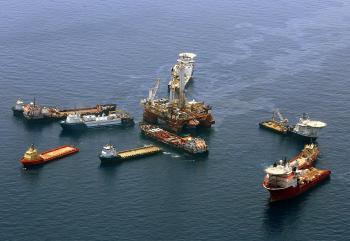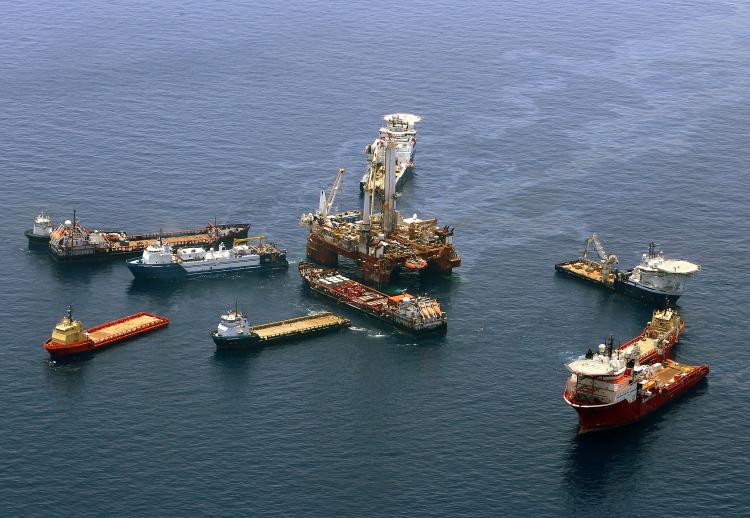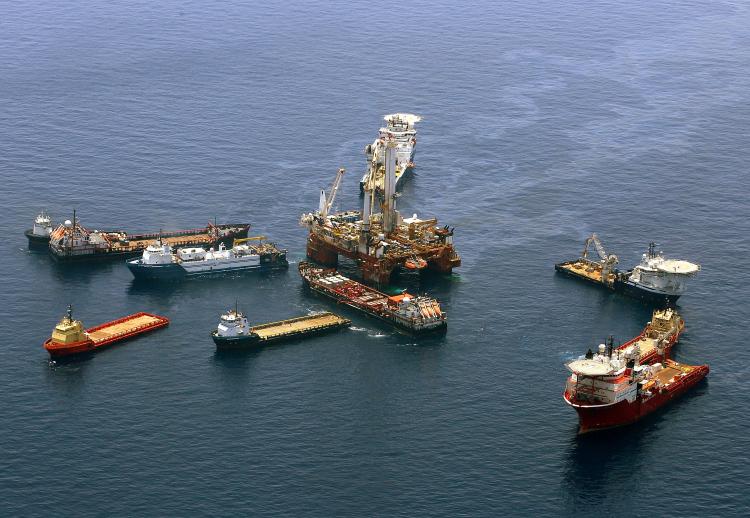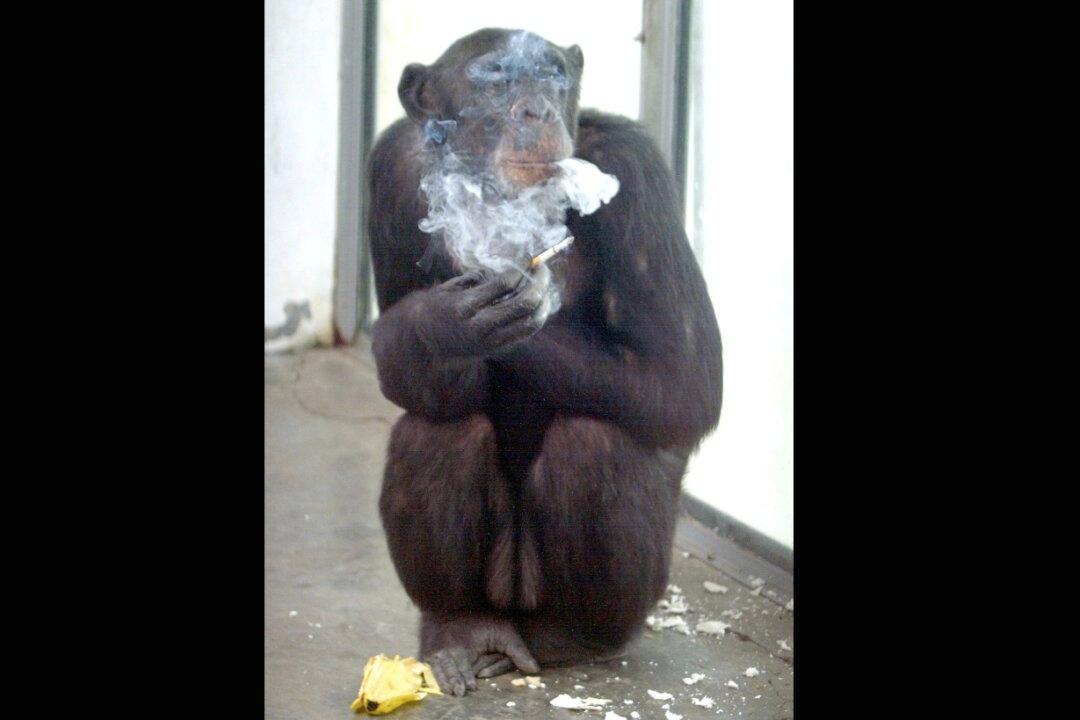President Obama Visits BP Gulf Oil Spill
President Obama took his second trip to Louisiana to get a first hand look at what is turning into one of the worst oil spills in US history.

Crews on ships work on the attempted 'top kill' procedure at the source site of the Deepwater Horizon disaster on May 29, 2010 in the Gulf of Mexico near Venice, Louisiana. Win McNamee/Getty Images
|Updated:





